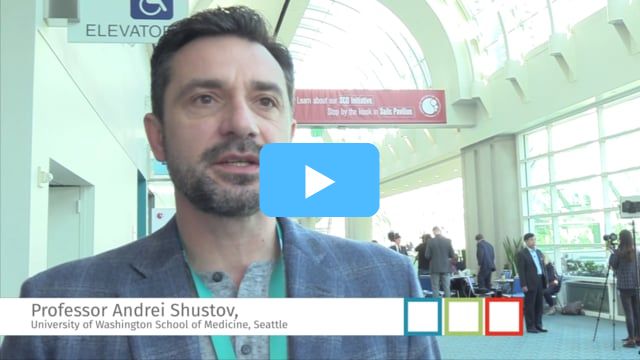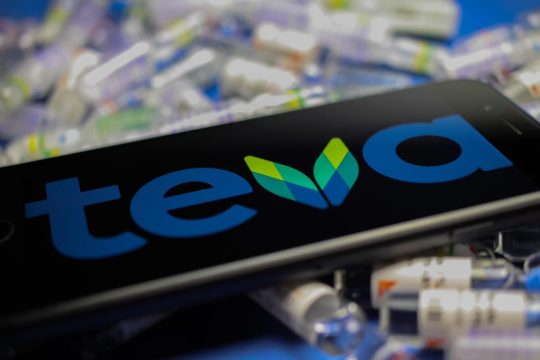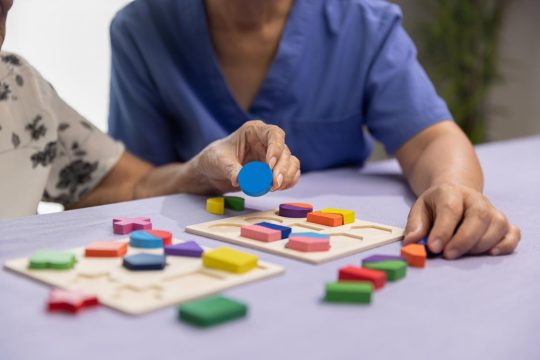Advertisment
ASH 2018: Advances in the management of peripheral T-cell lymphoma

Peripheral T-cell lymphoma (PTCL) is a heterogeneous group of lymphoid malignancies that often fails to respond to standard of care treatment,1-3 and the need for new therapies is therefore urgent…
By Maria Dalby (article) and Esther Drain (interviews)
Peripheral T-cell lymphoma (PTCL) is a heterogeneous group of lymphoid malignancies that often fails to respond to standard of care treatment,1-3 and the need for new therapies is therefore urgent. An oral abstract session on chemotherapy and targeted approaches in T-cell lymphomas included study results from adding alemtuzumab to CHOP in patients with PTCL and lenalidomide to CHOP in patients with angioimmunoblastic T-cell lymphoma (AITL), as well as phase 2 data on a novel SYK/JAK inhibitor and, importantly, results from the phase 3 ECHELON-2 study with brentuximab vedotin (BV) in combination with CHP in the frontline treatment of PTCL.
Professor Andrei Shustov (Seattle, USA), Dr Steven Horwitz (New York, USA) and Dr Andrew Davies (Southampton, UK) discuss the ECHELON-2 data, and the potential impact of this regimen in the management of PTCL
The ECHELON-2 study was presented (abstract 997) by Dr Steven Horwitz from the Memorial Sloan Kettering Cancer Center (New York, USA). BV is a CD30-targeting antibody-drug conjugate that is approved for the treatment of relapsed/refractory ALK-positive systemic anaplastic large cell lymphoma (sALCL) and has also shown encouraging results over a follow-up period of five years in a phase 1 study in patients with CD30-expressing PTCL.4 Based on this rationale, the ECHELON-2 study was designed to run as a double-blind randomised controlled study at 132 sites in 17 countries worldwide. Patients with previously untreated, CD30-expressing PTCL were randomised to either BV in combination with cyclophosphamide, doxorubicin and prednisone (BV+CHP; n=226) or cyclophosphamide, doxorubicin, vincristine and prednisone (CHOP; n=226) for six to eight cycles. Around two thirds of patients in either treatment arm completed six treatment cycles, and one patient in five completed eight cycles.
After a median follow-up period of 36.2 months PFS, which was the primary endpoint, was significantly prolonged in the BV+CHP arm compared with CHOP (HR=0.71; 95% CI 0.54, 0.93; p=0.011). The median three-year PFS rate was 57% in the BV+CHP arm versus 44% in the CHOP arm. Patients in the BV+CHP arm also had significantly prolonged OS (HR=0.66; 95% CI 0.46, 0.95; p=0.0244). Subset analyses showed that the PFS benefit with BV+CHP was especially pronounced in patients with ALK-positive sALCL and in patients with stage IV disease. At the end of treatment patients in the BV+CHP arm had achieved significantly greater response rates compared with patients on CHOP (ORR 83% versus 72%; p=0.0032 and CR 68% versus 56%; p=0.0066). The safety profile of BV+CHP was comparable to that of CHOP with similar rates of Grade 3 or 4 adverse events and serious adverse events, and comparable numbers of patients receiving G-CSF primary prophylaxis against neutropenia. The rate of treatment-emergent peripheral neuropathy was also comparable in the two treatment arms, with only 1% of patients in each arm experiencing Grade 3 symptoms. Based on these findings BV+CHP has been approved by the FDA for use in adult patients with previously untreated sALCL or other CD30-expressing PTCL.
Dr Horwitz discusses why he believes that the benefit seen is in all T-cell subtypes studied in ECHELON-2, not just ALCL.
Next, Professor Francesco d’Amore from Aarhus University Hospital (Aarhus, Denmark) presented the final results of the randomised phase 3 ACT-1 study (abstract 998) in which patients aged 65 years or younger with newly-diagnosed and previously untreated PTCL received CHOP with or without the addition of anti-CD52 monoclonal antibody alemtuzumab (ALZ) followed by autologous stem cell transplantation. A total of 131 patients were randomised and received study treatment; the majority of patients had PTCL-NOS (63%) or AITL (24%). The study failed to meet its primary objective of demonstrating superior event-free survival in the ALZ+CHOP arm compared with CHOP alone, which the investigators attributed to lack of statistical power after recruitment was halted at 44% of the planned sample size due to slow accrual. That said, patients in the ALZ-CHOP arm had consistently numerically higher EFS, PFS ad OS rates at three, four and five years compared with CHOP and the investigators concluded that adding ALZ to CHOP and stem cell transplantation was feasible and well tolerated.
A number of studies have shown that patients with relapsed/refractory PTCL can respond to treatment single-agent lenalidomide, and that this activity is especially pronounced in AITL.5-8 Dr Francois Lemonnier from the Henri Mondor University Hospital (Paris, France) presented the results of the phase 2 REVAIL study (abstract 999) which was designed on the rationale that patients with previously untreated AITL may benefit from adding lenalidomide to a classic CHOP regimen, with the primary objective of evaluating the complete metabolic response rate based on PET. Patients aged 60–80 years received lenalidomide plus CHOP with intrathecal methotrexate as CNS prophylaxis for an induction period of 12 weeks, followed by a 13-week consolidation phase. A total of 80 patients were enrolled and 44 patients completed the study. At the end of treatment, 43.6% of patients had achieved CR and a further 3.8% PR, yielding an ORR of 47.4%. Median PFS was 13.7 months and median OS 50.6 months. Patients with DNMT3A mutations were found to have significantly poorer response rates, and combinations of TET2, IDH2 and DNMT3A mutations were associated with significantly shorter OS. Eight patients (10%) developed thrombosis and only two patients reported a Grade 3 rash, which in the investigators’ view is an acceptable level of toxicity for treatment of AITL in elderly patients.
Dr Horwitz also presented some interesting data on the use novel targeted strategies in relapsed/refractory PTCL. A phase 2a study evaluated cerdulatinib, a small-molecule SYK/JAK inhibitor for the treatment of relapsed/refractory PTCL and cutaneous T-cell lymphoma (CTCL) (abstract 1001). Patients who had relapsed on at least one prior systemic therapy were enrolled in this study and received treatment with cerdulatinib 30mg twice daily until progression, intolerance or response adequate to allow stem cell transplantation. A total of 38 patients with PTCL and 22 patients with CTCL received treatment; in the PTCL cohort 35% of patients achieved an ORR and 31% achieved CR, and seven patients remain on treatment for up to 12 months. One patient who achieved CR progressed to transplantation. In the CTCL cohort, ORR was 50% and 10% achieved CR. The most common adverse events were diarrhoea (30%), increased lipase levels (20%), increase amylase levels (18%), nausea (13%) and neutropenia (12%). The investigators concluded that cerdulatinib showed sufficient clinical activity and tolerability to justify continued development.
Another oral abstract presented by Dr Horwitz was a phase 1 study which evaluated PI3K-δ/γ inhibitor duvelisib in combination with romidepsin or bortezomib in patients with relapsed/refractory PTCL. The primary endpoint in this study was to determine the maximum tolerated dose (MTD) for each combination regimen. Eighty patients with a median age of 64 years and a median of three prior lines of therapy were included; 13 patients (16%) had undergone prior transplantation. MTD in the duvelisib+romidepsin arm was 75mg duvelisib twice daily and 10mg/m2 romidepsin given intravenously; in the duvelisib+bortezomib arm MTD was 25mg duvelisib twice daily and 1.0mg/m2 bortezomib administered subcutaneously. Patients in the duvelisib+romidepsin arm had an ORR of 59%, and 33% achieved CR. Median PFS was 6.72 months among patients with PTCL and 5.41 months in patients with CTCL. The duvelisib+bortezomib combination showed less activity with an ORR of 35% and only 13% of patients achieving CR, and a median PFS of less than five months in both PTCL and CTCL patients. At MTD both combination regimens showed acceptable safety and tolerability and the investigators concluded that the response rates and safety of combination therapy with duvelisib+romidepsin warrant further investigation.
References
- Savage KJ, Chhanabhai M, Gascoyne RD, et al. Characterization of peripheral T-cell lymphomas in a single North American institution by the WHO classification. Ann Oncol 2004;15:1467-75.
- Savage KJ, Harris NL, Vose JM, et al. ALK- anaplastic large-cell lymphoma is clinically and immunophenotypically different from both ALK+ ALCL and peripheral T-cell lymphoma, not otherwise specified: report from the International Peripheral T-Cell Lymphoma Project. Blood 2008;111:5496-504.
- Simon A, Peoch M, Casassus P, et al. Upfront VIP-reinforced-ABVD (VIP-rABVD) is not superior to CHOP/21 in newly diagnosed peripheral T cell lymphoma. Results of the randomized phase III trial GOELAMS-LTP95. Br J Haematol 2010;151:159-66.
- Fanale MA, Horwitz SM, Forero-Torres A, et al. Five-year outcomes for frontline brentuximab vedotin with CHP for CD30-expressing peripheral T-cell lymphomas. Blood 2018;131:2120-2124.
- Fabbri A, Cencini E, Pietrini A, et al. Impressive activity of lenalidomide monotherapy in refractory angioimmunoblastic T-cell lymphoma: report of a case with long-term follow-up. Hematol Oncol 2013;31:213-7.
- Morschhauser F, Fitoussi O, Haioun C, et al. A phase 2, multicentre, single-arm, open-label study to evaluate the safety and efficacy of single-agent lenalidomide (Revlimid) in subjects with relapsed or refractory peripheral T-cell non-Hodgkin lymphoma: the EXPECT trial. Eur J Cancer 2013;49:2869-76.
- Toumishey E, Prasad A, Dueck G, et al. Final report of a phase 2 clinical trial of lenalidomide monotherapy for patients with T-cell lymphoma. Cancer 2015;121:716-23.
- Dueck G, Chua N, Prasad A, et al. Interim report of a phase 2 clinical trial of lenalidomide for T-cell non-Hodgkin lymphoma. Cancer 2010;116:4541-8.





